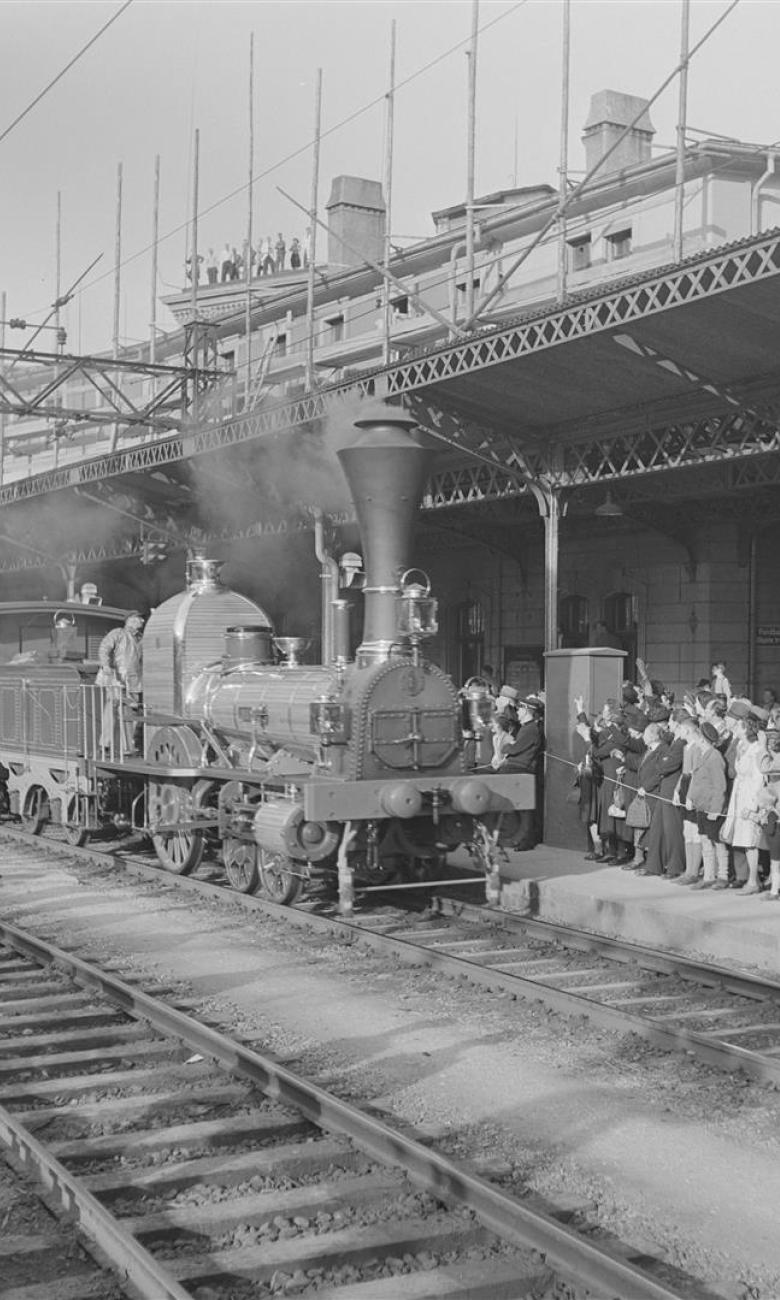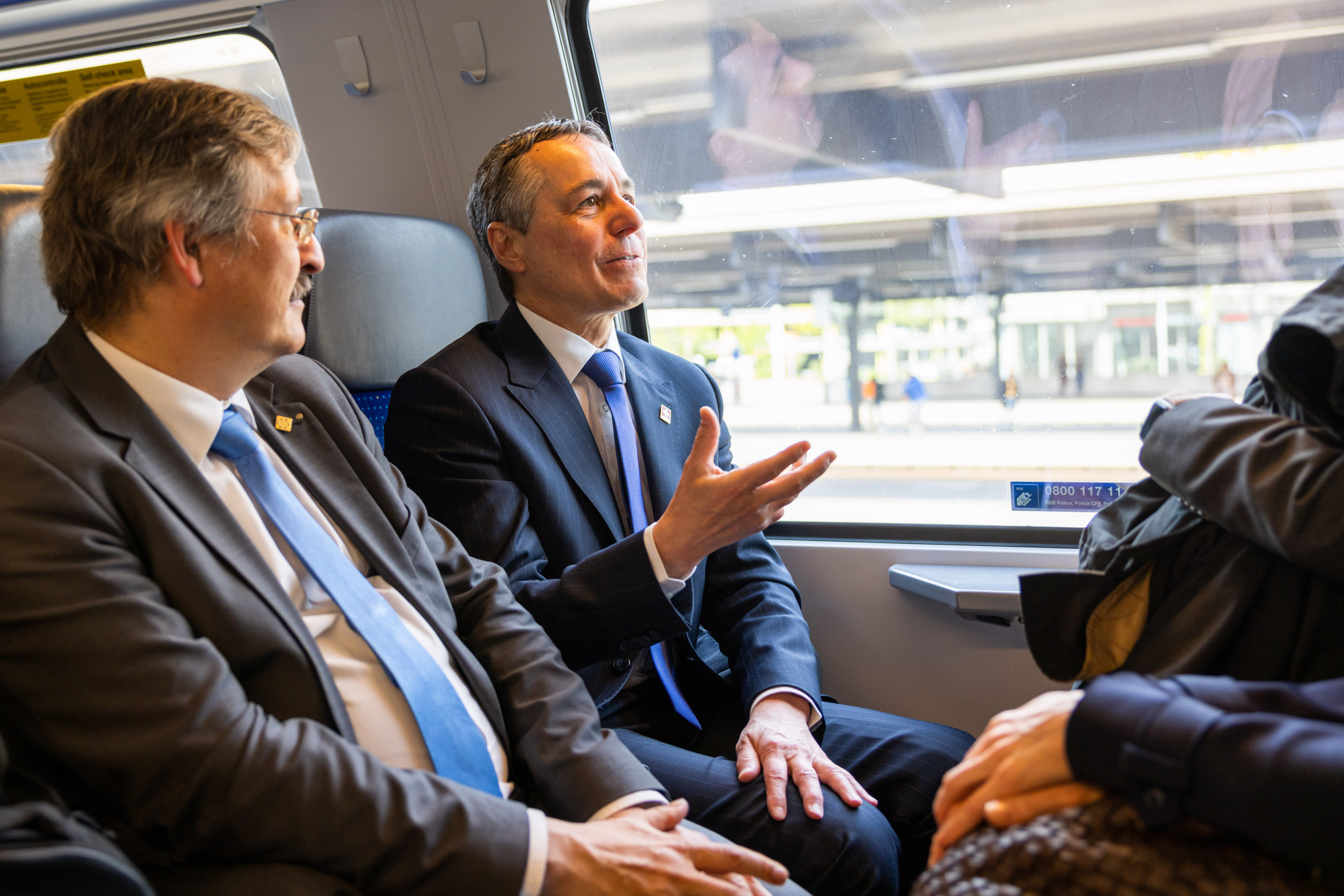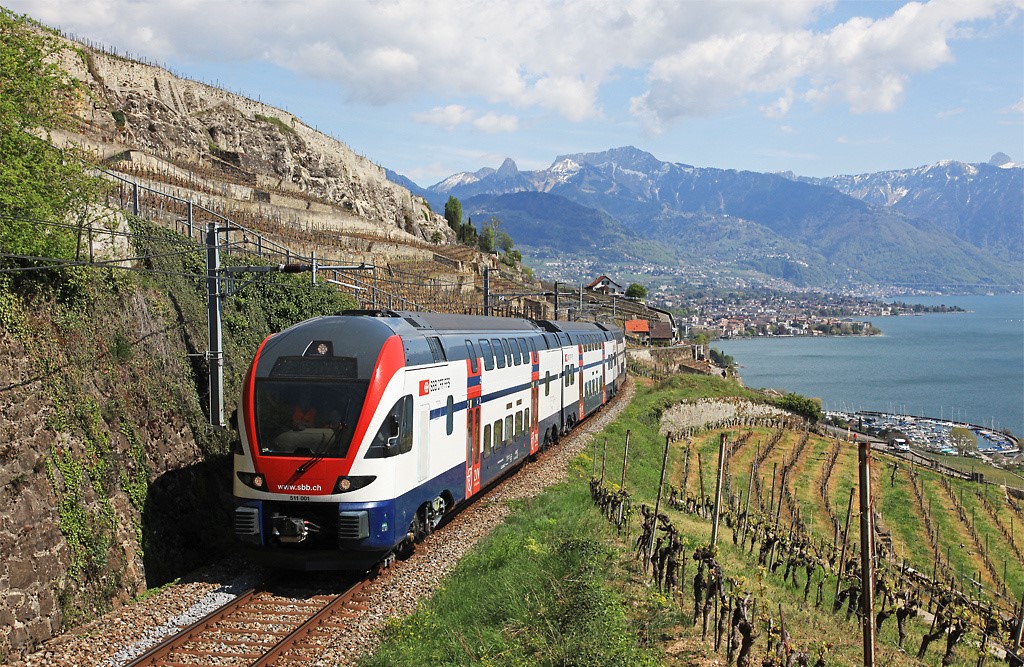Swiss public transport – going places for 175 years
175 years ago, the Spanisch-Brötli (Spanish bun) line between Baden and Zurich was the first railway to operate in Switzerland. Today, public transport brings hundreds of thousands of people to work and school every day – even in the most remote valleys and regions of Switzerland. Public transport connects and keeps us moving, and it is helping Switzerland achieve its climate goals.
On 9 August 1847, the Spanisch-Brötli (Spanish bun) line between Baden and Zurich became the first railway in Switzerland to launch operations. The advent of the railways ushered in an era of industrial, technological, spatial and social development. Public transport in today's Switzerland is an interregional network of perfectly timed railway, bus, tram, boat and mountain railway connections that has the unwavering loyalty of the public and politicians alike. The constantly rising passenger numbers show just how popular public transport is: over 1.5 million people a day were using Swiss public transport before the Corona pandemic. With each rail passenger in Switzerland travelling an average of 2,000 kilometres by train every year, it is no wonder that the Swiss are a nation of railway enthusiasts!

Direct line to success
Switzerland's public transport system is an unrivalled success story, and not just because of the growth in passenger numbers. It is the high quality achieved by Swiss transport services day in, day out that makes this country the best place in the world to rely on public transport. The high quality is largely down to achievements that the Swiss have long taken for granted. These include regular-interval timetables that enable perfectly timed connections between services throughout the country, advantageous season tickets for regular travellers, and something the Swiss call 'direct transport'. Although the name doesn't give much away, the principle of direct transport makes Switzerland the envy of public transport users the world over. Travellers in Switzerland can buy a single ticket to cover their whole journey on any form of public transport, and get a better deal than if they bought tickets for each stage of their journey. Of course, it goes without saying that you can also book your entire journey on a single app, and bag a supersaver ticket in the process.

Diversity of public transport
Public transport services take people to work and school, and visitors and tourists (and of course the locals) to the remotest valleys and regions of Switzerland. The closely interconnected network of rail, bus, tram, boat and even cable car services, featuring a regular-interval timetable, is unique in the world. Some 250 transport companies work together to provide a fundamental public service that brings people together and keeps Switzerland supplied and connected.
Everybody uses public transport
Because it is so great, almost everyone in Switzerland is a loyal customer, using public transport for their daily commute, in their free time or on holiday. Politicians are no exception; the start of sessions of the Swiss Parliament in Bern is timed in accordance with public transport timetables.
The unique success of Switzerland's public transport system has always been a factor in the country's economic growth. If you want to promote a region's economy, you have to make it accessible by public transport, because an accessible location is essential to attract business. The fact that large metropolitan areas would essentially grind to a halt without constantly expanding transport services shows the huge economic importance of our public transport system. This expansion has led to a decrease in the use of individual motorised transport and better quality of life in urban centres.

The season ticket: an enduring piece of history
Almost half of all Swiss people have a season ticket for public transport. Astonishingly, these tickets which make sense in our highly mobile times are not a recent invention. The first Generalabonnement, which granted free travel on (almost) the entire public transport network in Switzerland, was introduced in 1898. Fifteen Swiss railways signed up for the scheme. Introduced in 1891, the half-fare travelcard, which entitles holders to a 50 per cent discount on every ticket, is almost as old.

The ticket to a sustainable future
As well as being the main artery of the Swiss economy and society, public transport is clean and highly energy-efficient, making it part of the solution in the fight against climate change. Trains in Switzerland run entirely on electricity, almost 100% of it renewable and from Swiss hydropower plants.
Because public transport is very energy-efficient and low in emissions, it is an important contributor to efforts to achieve the climate goals. Transporting more passengers per vehicle is not only better for the climate, it also takes up less space.Railways and public transport in Switzerland have a long history and will continue to play an important role in the future as the need for comfortable, climate-friendly and energy-efficient transport continues to grow.

175 years, a reason to celebrate
To mark the 175th anniversary of public transport in Switzerland, the industry has organised five commemorative weekends around the country between May and October 2022. More than 50 transport companies are taking part in the festivities. For more information, visit the online festival guide (www.175-jahre.ch).




